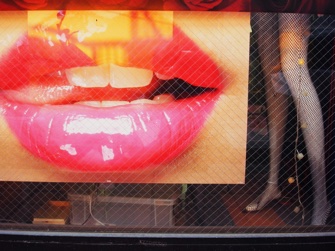
Cities, seen through the eyes of two camera-wielding artists, Daido Moriyama and Fernell Franco, are the subject of new exhibitions at the Fondation Cartier pour l’Art Contemporain.
Two phrases written by María Wills Londoño about Franco for the catalog of his exhibition, “Cali Clair-Obsur,” could actually be applied to the work of both photographers. Both of them focus on “transitory spaces which, but for these photographs, would have passed into anonymity,” and both take pictures that reveal the “indefinable charm that can reside in chaos.”
The Moriyama exhibition is split into two parts. In one gallery is the show “Tokyo Color,” with 86 large-format color pictures of Tokyo taken between 2008 and 2015. They are grouped closely together by two, three, four or more on freestanding panels. I wondered if they wouldn’t have more impact if they were displayed separately and asked one of the médiatrices (art guides thoughtfully provided by the Fondation Cartier to explain the art to visitors) about it. She said they were shown that way at the artist’s request to give an impression of the chaos in his Tokyo neighborhood, the “monster that is Shinjuku,” home to a red-light district, several universities and the world’s busiest train station, one of many in the area.
At the press conference, Moriyama spoke of how he walked around his neighborhood every day with a small camera, “instinctively ” snapping the shutter without looking through the viewfinder whenever he saw something that interested him. “I don’t think, I feel,” he said. Since the advent of digital cameras, he has gotten into the habit of shooting in color, then converting most of the photos into black-and-white, which he finds “erotic in an abstract way.” The ones in the exhibition are those he has chosen to leave in color
Personally, I found the slide show of 291 black-and-white images, “Dog and Mesh Tights” in the other gallery to be more powerful, with stunning images of everything from water
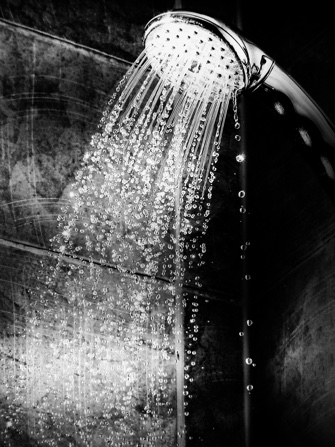
spouting from a showerhead or a torn window screen to a woman’s bejeweled lips. These photos were taken in cities around the world, although none are identifiable.
Fernell Franco (1942-2006) took a very different approach to photographing his city, Cali, Colombia. His work, on show in the
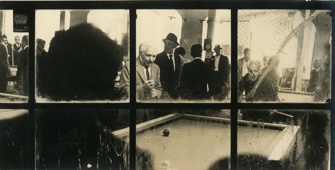
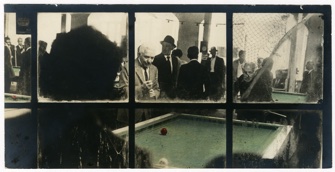
basement gallery, examines aspects of the city – ruined buildings, empty seaside landscapes, bicycles, interiors, billiards halls, etc. – in series, studying them closely, dissecting them, multiplying the images, hand-coloring some of them, zooming in for closeups and pulling back for long views like a film director.
Film was in fact the first love of this country boy forced to move to the city as a child by Columbia’s civil war, and he never lost his empathy for the refugees who flooded Cali, fleeing poverty and war and indelibly changing the city’s face. His images are dark, almost murky, not only because he often shows the dark side of the city but also in reaction to the harsh sunlight that usually flooded Cali.
Unlike Moriyama, fast, instinctive shooting was not his thing. His approach to his subjects was oblique. For the “Amarrados” series, for example, he went to the market to shoot but ignored the food stalls, vendors and buyers, photographing only mysterious packages
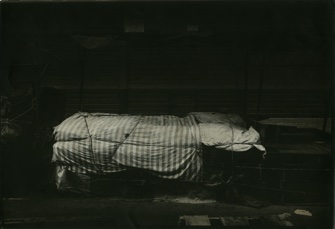
wrapped in fabric and tied up with rope. “I realized that this way of wrapping things up had to do with the way we wrap up death to insulate ourselves from it,” he said, “with the way we package death to cover it up, to keep it out of sight.”
The show also includes his “Prostitutas” series, the first to bring him fame as a photographer, which was shot in one of the last brothels in Buenaventura.
These two photographers from very different times and places take very different approaches to their work, but they share an obsession with cities and the ability to find the exotic and mysterious in their chaotic everyday surroundings.
Favorite